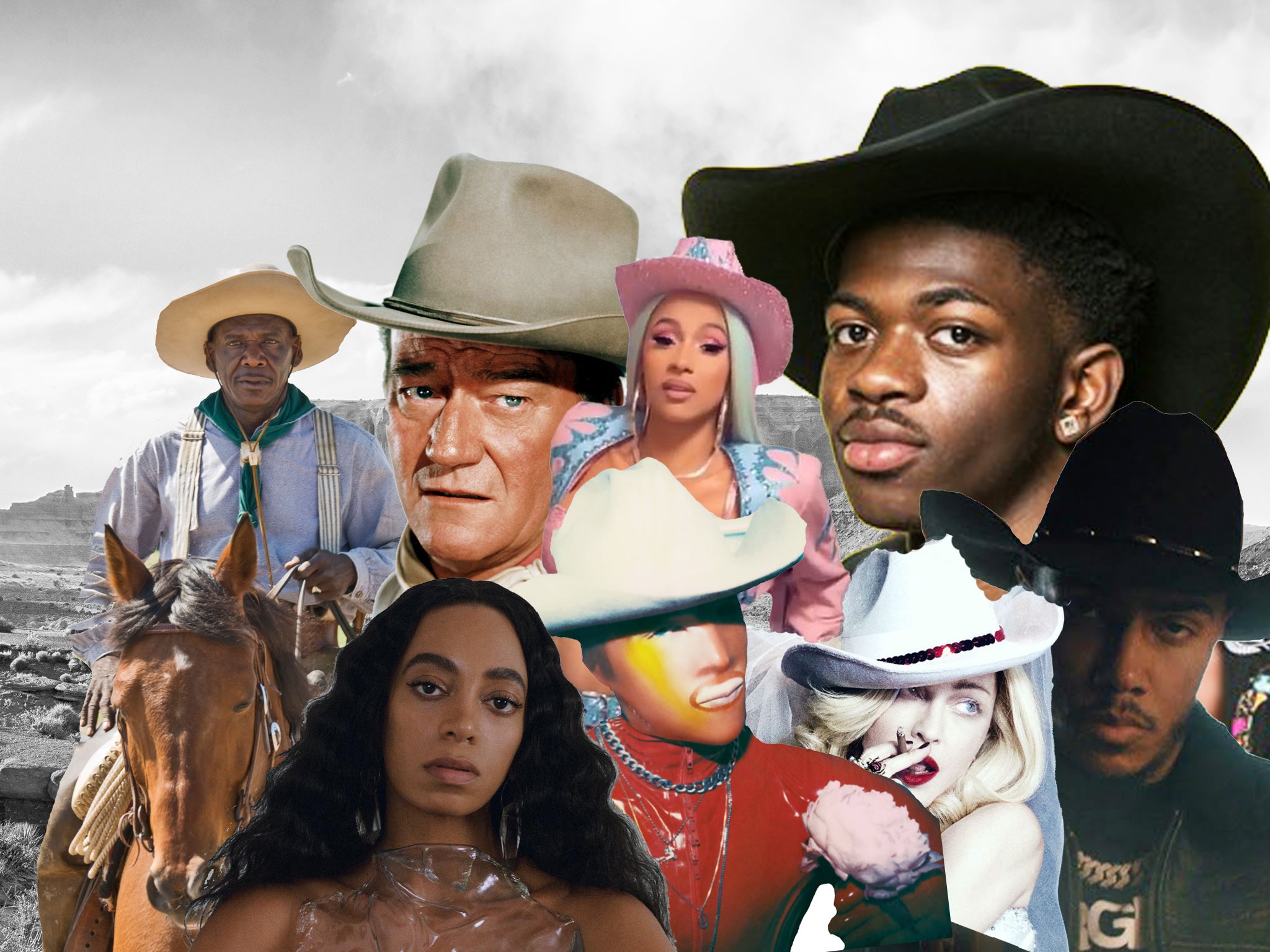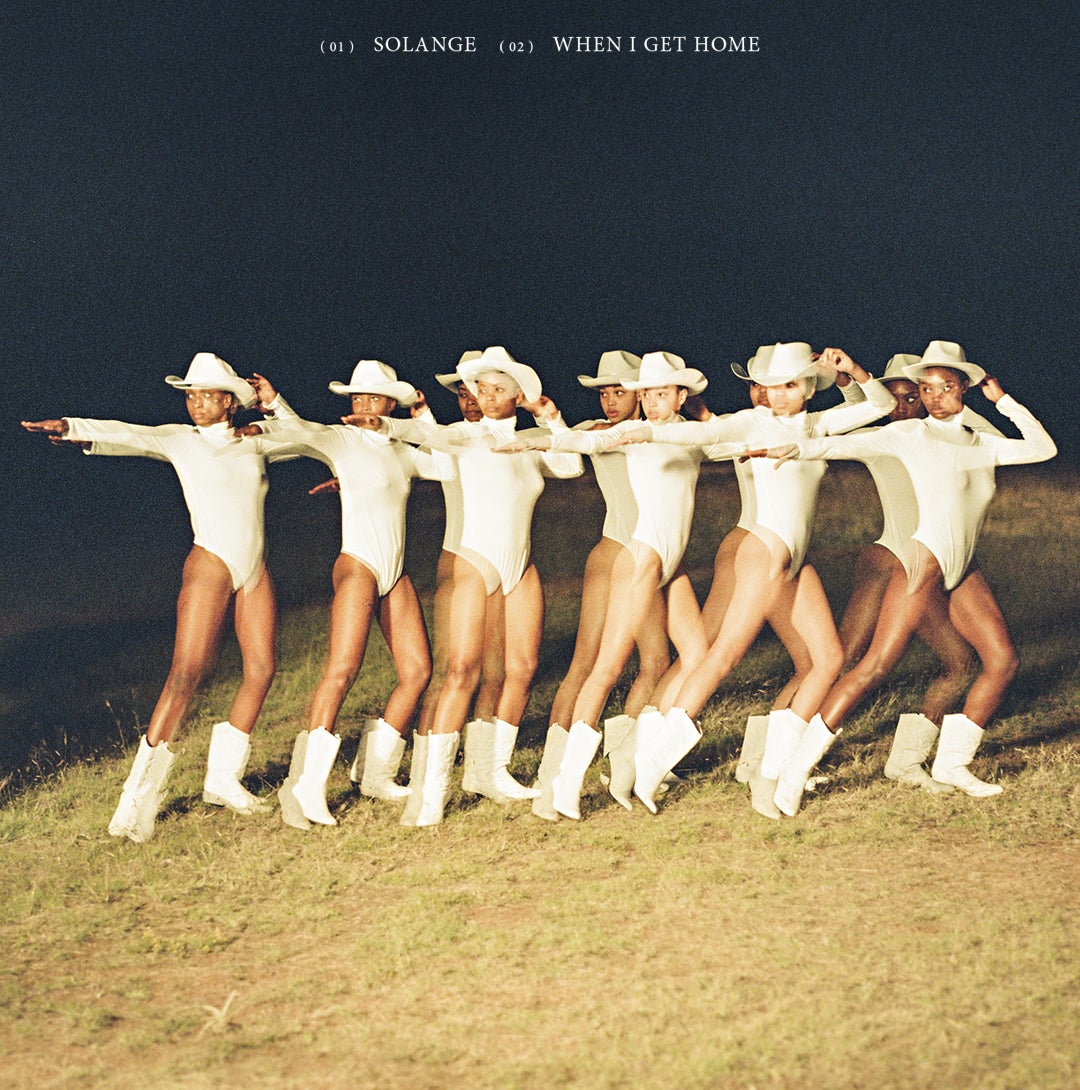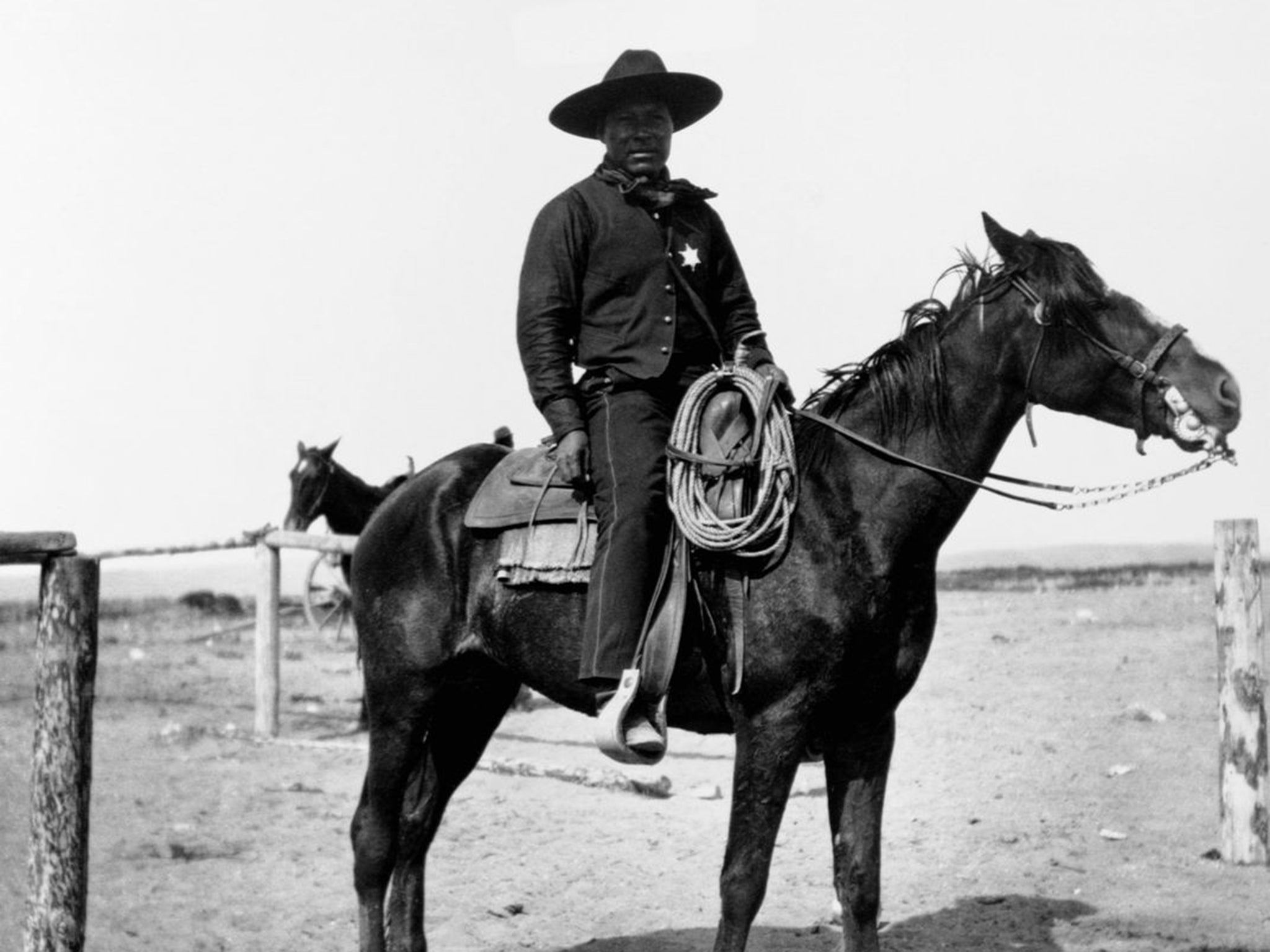Return of the cowboy: How musicians in 2019 are rewriting an American icon
As a spate of artists across genres explore western imagery in their work, music correspondent Roisin O’Connor looks at how the cowboy is being freed from its white, cis straight male stereotype


Your support helps us to tell the story
From reproductive rights to climate change to Big Tech, The Independent is on the ground when the story is developing. Whether it's investigating the financials of Elon Musk's pro-Trump PAC or producing our latest documentary, 'The A Word', which shines a light on the American women fighting for reproductive rights, we know how important it is to parse out the facts from the messaging.
At such a critical moment in US history, we need reporters on the ground. Your donation allows us to keep sending journalists to speak to both sides of the story.
The Independent is trusted by Americans across the entire political spectrum. And unlike many other quality news outlets, we choose not to lock Americans out of our reporting and analysis with paywalls. We believe quality journalism should be available to everyone, paid for by those who can afford it.
Your support makes all the difference.Cowboys are everywhere in music right now. It’s a trend that seems to have transcended genre: you can find them in country music, of course, but they now crop up in rap, rock, pop and hip-hop, too.
It’s a wave that has spilled over from 2018, the year Kacey Musgraves released her Grammy award-winning album Golden Hour (featuring the hit song “Space Cowboy”), the gritty, critically acclaimed western Godless took home two Emmy awards, and Red Dead Redemption 2 became the best-selling video game by a country mile.
In the past five months, there has been a plethora of artists intent on either reimagining what the cowboy can and should represent, or reinstating what decades of whitewashing in mainstream culture had erased. Ladbroke Grove rapper AJ Tracey released the song “Country Star”, on which he sings: “I’ve come too far, I’ve come too far/ Horsepower whip with a star/ Cowboy spins in the car/ Cowgirls rippin’ off bras/ When I ride then I scream, ‘Yeehaw’.” In the video for “Necklace” ft Jay Critch, also from his debut album, he also went for a Wild West theme.
Solange paid tribute to the black cowboys she grew up seeing in her hometown of Almeda, Texas, in a video that accompanied her exquisite album When I Get Home. Bronx native Cardi B wore a striptease cowgirl outfit in the video for the “Thotiana Remix”. British rock band Feet’s video for “Ad Blue” – set in a Wild West town – looks fun, but hints at the song’s darker conceptual source while taking an apparent swipe at corporate greed.
Then there’s rapper Lil Nas X’s song “Old Town Road”, which appeared on Billboard’s Hot Country Songs chart last month, causing an unprecedented row on the country music scene. It was subsequently removed by the chart’s compilers, who claimed it didn’t “embrace enough elements of today’s country music”. Critics of the move pointed out the double standard at play, where white country artists who borrow from rap and hip-hop are still permitted to remain in the charts. Country superstar Billy Ray Cyrus, who guest features in a remix of the track, tweeted words of encouragement to Lil Nas X: “When I got thrown off the charts, Waylon Jennings said to me: ‘Take this as a compliment. [It] means you’re doing something great! Only Outlaws are outlawed.’”
Bryant Keith Alexander, a professor and scholar in performance studies at Loyola Marymount University, suggests that the “Old Town Road” incident was a case of Nashville’s attempts to maintain a “perceived (White) purity of country music using genre qualifications as a trope of measurement, which is also analogous to the historically promoted images of only (or mostly) White cowboys”.
Contrary to mainstream culture’s understanding, an article in the Smithsonian estimated that one in four cowboys working in Texas during the golden age of westward expansion was black. Many others were Mexican, mestizo, or Native American. The term “yeehaw agenda” was coined last year by Dallas resident Bri Malandro, in an effort to celebrate black cowboys and cowgirls in pop culture, while subverting the hackneyed image of the straight-shooting, white macho cowboy á la John Wayne.
For Solange, including black cowboys in her album’s companion film was a way of reinstating them in mainstream American culture. “Growing up here in Texas, in Almeda, you’re just going to see black cowboys on the street,” she said at a Q&A in her hometown. “I don’t know John Wayne. I don’t know his story. I really don’t. We’ve had to rewrite what black history means for us since the beginning of time … It’s not just an aesthetic, this is something that we actually live.”

“Solange’s film is an homage,” says Professor Alexander, “not to the mythic or romanticised cowboy on film and television that is often linked with Texas writ large, but the real Black cowboys who work and labour in her native Houston.
“Her celebration of that cultural truism promotes the historical importance of that occupational reality, whose history is deeply ingrained in the making of the west (and the United States as a whole). [It is a] strategic counterpoint to extolling White heteronormative masculinity, and the history of denying Black presence and accomplishment in America.”
There was a collective eyebrow raise when Mac DeMarco announced his album, Here Comes the Cowboy, this year – and not just because its title was similar to Mitski’s 2018 record Be the Cowboy. Where other artists have been subverting the cowboy image, DeMarco claims to be using it as a form of escapism. “Cowboy is a term of endearment to me, I use it often when referring to people in my life,” he said. “Where I grew up, there are many people that sincerely wear cowboy hats and do cowboy activities. These aren’t the people I’m referring to.”
He expanded on the concept to Entertainment Weekly, saying, “I think a lot of my music is usually escapist, [like a] grass is greener, daydream kind of thing; I’m using the imagery of cowboys in that form. I like to think of this record as kind of the interpretation of the idea of the cowboy from somebody who knows absolutely nothing about cowboys.”
For the most part, however, it doesn’t seem like a coincidence that this recent spike in cowboy imagery comes at a time where America’s identity is under a particularly glaring spotlight. Will Kaufman, professor of American literature and culture at the University of Central Lancashire, stresses that the cowboy appeals to many artists because its fluid and contradictory nature can signify multiple aspects of American character.
“We can mock George W Bush’s pretensions to cowboy imagery in the immediate wake of the September 11 attacks – but we can also be dazzled by Gram Parsons’ over-the-top outfits or appreciate the deliberate inscrutability of Bob Dylan’s cowboy imagery,” he says. “Even an undeniable progressive like Woody Guthrie could sometimes get some mileage out of cowboy associations.”
In his 1907 autobiography, former slave and cowboy legend Nat Love recalled the camaraderie among his fellow cowboys with great fondness: “A braver, truer set of men never lived than these wild sons of the plains whose home was in the saddle and their couch, mother earth, with the sky for a covering,” he wrote. “They were always ready to share their blanket and their last ration with a less fortunate fellow companion and always assisted each other in the many trying situations that were continually coming up in a cowboy’s life.”

However, gay crooner Orville Peck – who has a Stetson permanently fixed to his head – is convinced the cowboy ethos is about feeling “intrinsically outside of things”. “It’s about rebellion and finding power even within solitude or alienation,” he told Dazed magazine. And what better way to explore those feelings of “otherness” than by reappropriating an icon that virtually every American accepts as part of the cultural zeitgeist?
Madonna – an artist constantly breaking new ground in pop music, and an American icon in her own right – echoes this sentiment by sporting a cowboy hat in the video announcing her new album Madame X, as she issues a statement on rebellion and lists the multiple, contradictory facets of her character. On their excellent album Social Cues, Kentucky-formed rock band Cage the Elephant explore feelings of isolation on an album where the cover shows their frontman wearing bright red latex and (you guessed it) another cowboy hat.
And on Be the Cowboy, Mitski rebuilds the cowboy into something that, while immediately evocative of the Marlboro cowboy, could serve as a metaphor for her confidence as an Asian American woman. “Whenever I was in a situation where maybe I was acting too much like my identity, which is wanting everyone to be happy, not thinking I’m worthy, being submissive, and not asking for more … [Whenever I was] doing exactly what the world expects of me as an Asian woman, I would turn around and tell myself, ‘Well, what would a cowboy do?’” she said.
“The cowboy can represent both individuality and conformity; both progressive and reactionary political positions; both heroism and savagery,” says Professor Kaufman.
“You can see the image of the cowboy altering throughout history, and I think it is precisely because of the fluidity of the cowboy image that it can be adopted or appropriated – sometimes with irony or as cultural satire, and sometimes not.”
With so many artists of all backgrounds, ethnicities and ideals using the same image to explore different aspects of identity, the whitewashed cowboy of lore is shattered, and pieced back together as something altogether more nuanced, multifaceted and multicultural. Surely that’s the kind of figurehead America should want. It’s certainly the one it needs.
Join our commenting forum
Join thought-provoking conversations, follow other Independent readers and see their replies
0Comments